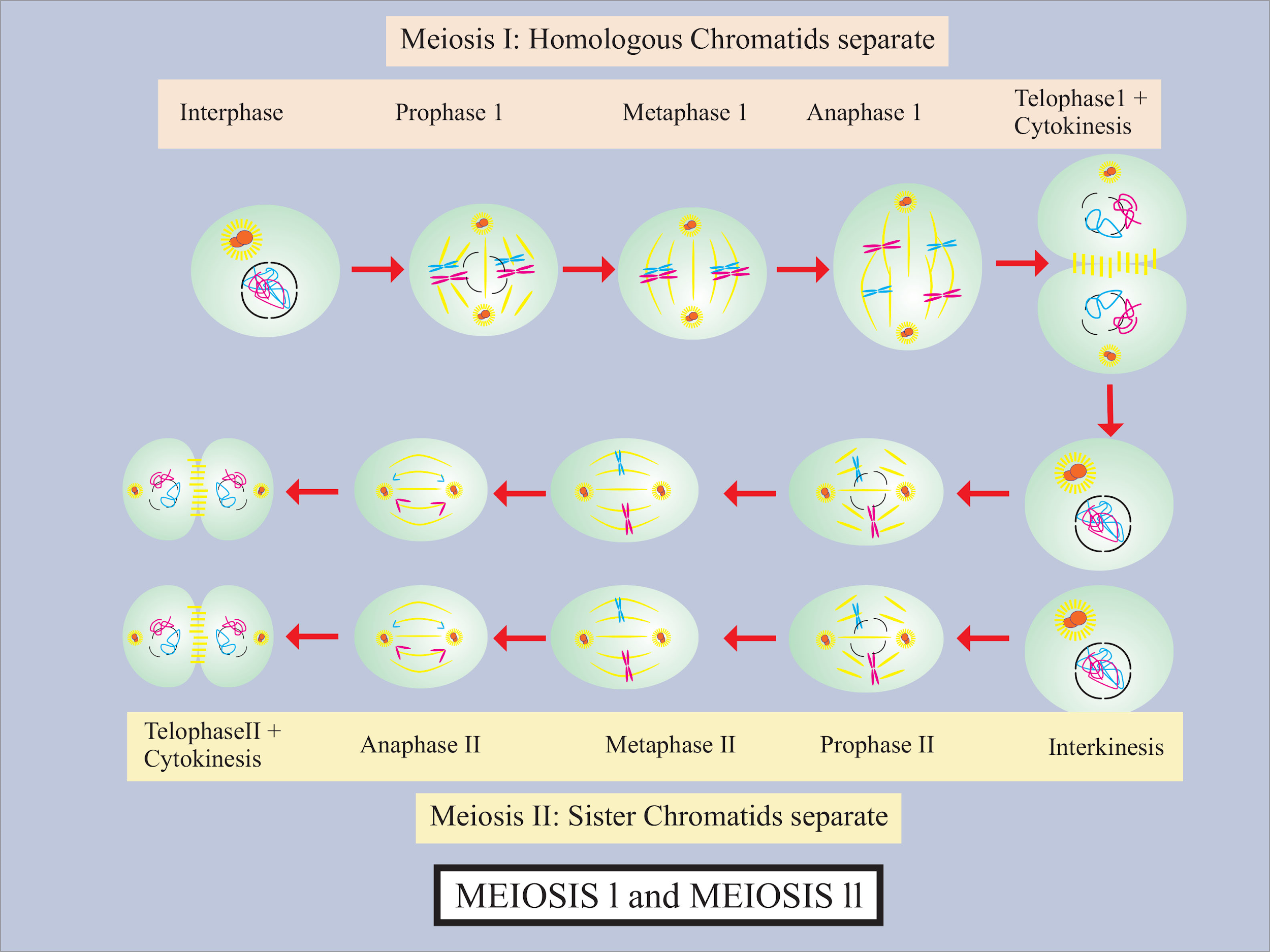
Meiosis I is a reduction division. Meiosis II is equational division due to
(a)Separation of chromatids
(b)Crossing over
(c)Pairing of homologous chromosome
(d)Disjunction of homologous chromosome
Answer
485.7k+ views
1 likes
Hint: Meiosis I and II are given the names based upon the ploidy number of the cells in those stages and the ploidy number of the cells before the beginning of those stages. Meiosis I results in the formation of haploid cells.
Complete answer:
The cells before entering the process of meiosis are diploid.
The first meiotic division or the meiosis results in the formation of two cells, each with 46 chromosomes. Then, the second round of meiotic division takes place and each of these two cells divides further resulting in four haploid cells. Thus, Meiosis is called a reduction division, because, at the end of this special type of cell division, four haploid cells are formed.
On the other hand, in meiosis II, the two chromatids of each chromosome separate from each other and go to separate daughter cells. As a result, there is no increase or decrease in the number of chromosomes and it remains the same as produced by meiosis I.
Therefore, meiosis II is known as equational division or homotypic division.
So, the correct answer is, “Separation of chromatids”
Note:
-After both meiosis I and II, the cell is haploid with 23 chromosomes.
-The process meiosis II has the same steps as mitosis.
-The steps in meiosis I, are the main steps that are responsible for genetic variation, such as crossing over and separation of chromatids.

Complete answer:
The cells before entering the process of meiosis are diploid.
The first meiotic division or the meiosis results in the formation of two cells, each with 46 chromosomes. Then, the second round of meiotic division takes place and each of these two cells divides further resulting in four haploid cells. Thus, Meiosis is called a reduction division, because, at the end of this special type of cell division, four haploid cells are formed.
On the other hand, in meiosis II, the two chromatids of each chromosome separate from each other and go to separate daughter cells. As a result, there is no increase or decrease in the number of chromosomes and it remains the same as produced by meiosis I.
Therefore, meiosis II is known as equational division or homotypic division.
So, the correct answer is, “Separation of chromatids”
Note:
-After both meiosis I and II, the cell is haploid with 23 chromosomes.
-The process meiosis II has the same steps as mitosis.
-The steps in meiosis I, are the main steps that are responsible for genetic variation, such as crossing over and separation of chromatids.

Latest Vedantu courses for you
Grade 11 Science PCM | CBSE | SCHOOL | English
CBSE (2025-26)
School Full course for CBSE students
₹41,848 per year
Recently Updated Pages
Master Class 9 General Knowledge: Engaging Questions & Answers for Success

Master Class 9 English: Engaging Questions & Answers for Success

Master Class 9 Science: Engaging Questions & Answers for Success

Master Class 9 Social Science: Engaging Questions & Answers for Success

Master Class 9 Maths: Engaging Questions & Answers for Success

Class 9 Question and Answer - Your Ultimate Solutions Guide

Trending doubts
State and prove Bernoullis theorem class 11 physics CBSE

What are Quantum numbers Explain the quantum number class 11 chemistry CBSE

Who built the Grand Trunk Road AChandragupta Maurya class 11 social science CBSE

1 ton equals to A 100 kg B 1000 kg C 10 kg D 10000 class 11 physics CBSE

State the laws of reflection of light

One Metric ton is equal to kg A 10000 B 1000 C 100 class 11 physics CBSE




